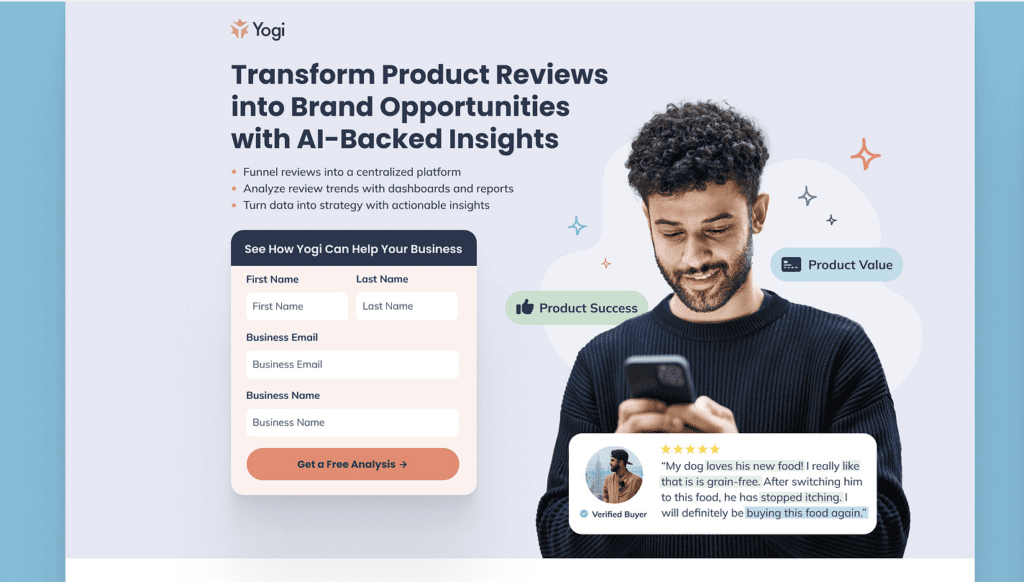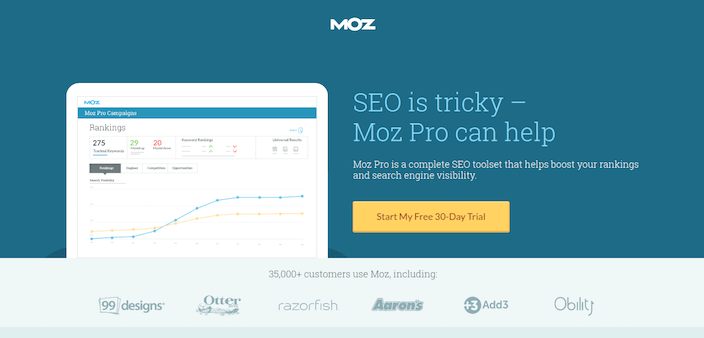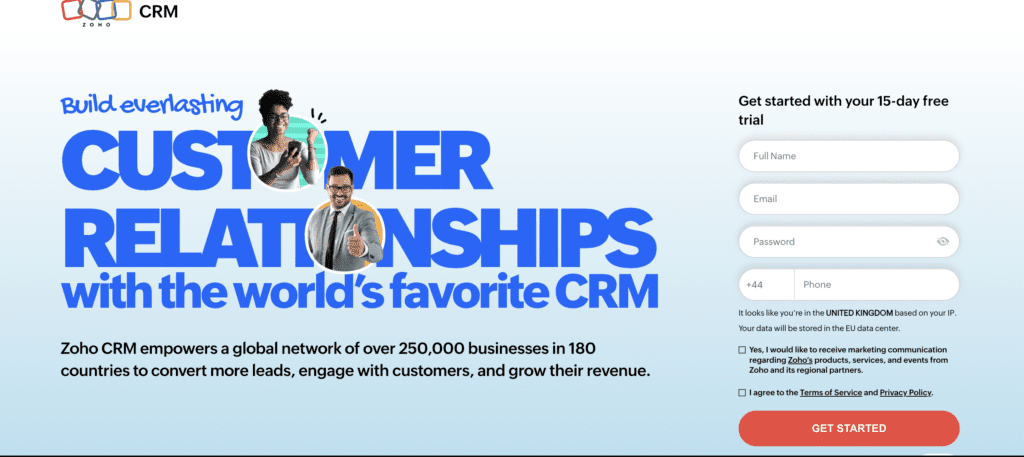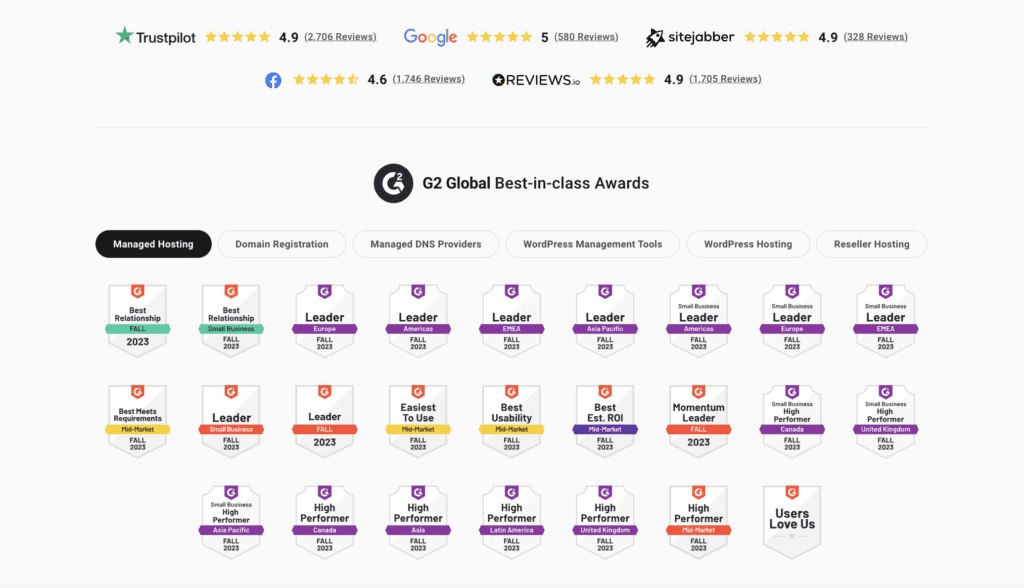Creating a captivating landing page is crucial for converting visitors into leads or customers. A well-designed landing page can significantly impact your website’s success. To achieve this, it’s essential to understand the key elements and strategies that make a landing page highly effective.
Understanding the Importance of a Landing Page
A landing page is the entry point for visitors who click on an advertisement, search result, or specific link. Its primary goal is to persuade visitors to take a particular action, such as purchasing, signing up for a service, or subscribing to a newsletter.
Types of landing pages
Landing pages can be classified into two main types: lead generation landing pages and click-through landing pages
Lead Generation Landing Pages
Lead generation landing pages are designed to capture visitor information like name, email address, or phone number in exchange for a free offer or resource.

These pages typically feature a lead form and clear and compelling headline that explains the benefits of the offer.
Click-Through Landing Pages
Click-through landing pages are designed to persuade users to click through to a specific page. And take a specific action there. Such as making a purchase or signing up for a free trial.

These pages typically feature a clear and compelling headline, persuasive copy, and a clear CTA button.
Critical Elements for Designing a High-Converting Landing Page
Compelling Headline (H2)
The headline is the first thing visitors notice. Craft a clear, attention-grabbing headline directly related to visitors’ needs or desires. It should be concise, impactful, and communicate the value proposition.
Persuasive Subheadings (H3)
Use subheadings to break down content and guide visitors through the page. Each subheading should highlight critical benefits or features, addressing potential pain points and emphasising solutions.
Engaging Visuals and Multimedia
Incorporate high-quality images, videos, or infographics that complement the content. Visuals help capture attention, explain concepts, and make the page visually appealing.
Compelling Call-to-Action (CTA)
The CTA button should be prominent, using persuasive language that encourages action. It should stand out visually and clearly state what action visitors are expected to take.
Here are five examples of solid call-to-action (CTA) copy that are clear, persuasive, and encourage action:
“Start Your Free Trial Today!”
This CTA emphasizes the benefit of a free trial, inviting users to take action immediately without any financial commitment. It’s straightforward and prompts users to engage with the product or service.

“Get 50% Off – Shop Now!”
Offering a discount incentive with a time-sensitive appeal (“Shop Now!”) creates a sense of urgency. It encourages immediate action, driving potential customers towards making a purchase.

“Join Our Community for Exclusive Updates!”
This CTA leverages the desire for exclusivity and staying informed. Inviting users to join a community for exclusive updates emphasizes the value they’ll receive by signing up.
“Unlock Premium Content – Download Your Guide!”
Using action-oriented language (“Unlock,” “Download”) to access premium content creates a sense of value and immediacy, enticing visitors to obtain valuable information or resources.
“Book Your Appointment for a Free Consultation!”
This CTA offers an explicit action (booking an appointment) and emphasizes the benefit of a free consultation. It’s effective for service-based businesses looking to engage potential clients.
Each of these examples is crafted to resonate with the target audience by highlighting benefits, providing an explicit action, and creating a sense of urgency or exclusivity, vital elements in creating compelling call-to-action copy.
Clear and Concise Content
Keep the content focused and easy to understand. Highlight the unique selling points, benefits, and features concisely, avoiding unnecessary jargon or information overload.
Trust Indicators and Testimonials
Include trust-building elements like client testimonials, reviews, trust badges, or certifications to instil confidence in your offering.
Here are 5 types of indicators you should consider using
Customer Testimonials with Photos or Videos:
Genuine testimonials accompanied by photos or videos of satisfied customers add authenticity and credibility. Seeing real faces and hearing personal stories can significantly influence potential customers’ trust in a product or service.

Trust Badges and Certifications:
Displaying trust badges, security seals, or certifications from well-known organisations, such as BBB (Better Business Bureau), SSL certificates, or industry-specific awards, reassures visitors about the credibility and security of the website.

Social Proof through User Counts or Ratings:
Displaying the number of satisfied customers, subscribers, or users can act as social proof. Additionally, directly showing ratings or reviews from third-party platforms (e.g., Google Reviews, Trustpilot) on the website can enhance credibility.
Case Studies or Success Stories:
Highlighting detailed case studies or success stories that showcase how your product or service solved a problem for a client can be incredibly persuasive. Concrete examples of successful outcomes help build trust in your offerings.
Endorsements from Influential Figures or Brands:
If applicable, featuring endorsements or partnerships with well-known individuals or brands within your industry can significantly impact credibility. Quotes or mentions from industry leaders or influencers can reinforce trust among visitors.
These trust indicators and testimonials work together to create a sense of reliability and authenticity for potential customers, increasing their confidence in your brand or service. Combining multiple types of trust-building elements can further strengthen the overall trustworthiness of your website.
Mobile Responsiveness
Ensure the landing page is optimised for mobile devices, as most web traffic comes from smartphones and tablets.
Best Practices for Optimisation
A/B Testing
Continuously test elements like headlines, CTAs, images, and layouts to determine what resonates best with your audience.
Analyse and Iterate
Utilise analytics tools to track visitor behaviour and conversion rates. Use this data to make informed decisions and continuously improve the landing page’s performance.
Page Load Speed
Page load speed plays a crucial role in the success of a landing page for several reasons:
User Experience (UX):
Fast-loading pages enhance user experience by providing immediate access to content. Visitors are more likely to stay engaged and navigate the page if it loads quickly. A slow-loading page can frustrate users, leading to higher bounce rates and decreased conversion rates.
Search Engine Ranking:
Page load speed is a significant factor in search engine algorithms. Search engines like Google consider loading speed as a ranking factor. Faster-loading pages tend to rank higher in search results, thereby improving visibility and organic traffic to the landing page.
Reduced Bounce Rates:
A slow-loading page often results in higher bounce rates, as users are likelier to abandon the page if it takes too long to load. This negatively impacts engagement and conversions. Optimising load speed helps retain visitors and encourage them to explore the content further.
Mobile Responsiveness:
With the increasing use of mobile devices for browsing, having a fast-loading landing page is even more critical. Mobile users expect quick access to information, and a slow-loading page on mobile can lead to a poor user experience, impacting conversions negatively.
Conversion Rates:
Faster page load times have a direct correlation with higher conversion rates. When visitors can access information swiftly and navigate easily, they are more likely to complete the desired action, such as purchasing or signing up.
Ad Performance:
For landing pages linked to ad campaigns, a slow-loading page can impact the performance of the ads. It can lead to higher costs as ad platforms often reward faster-loading pages with lower costs per click and better ad placements.
Competitive Advantage:
A fast-loading landing page can be a distinguishing factor in a competitive landscape. It creates a positive first impression, setting your page apart from competitors and potentially attracting more visitors.
To ensure optimal page load speed for a landing page, strategies such as optimising images, minifying code, leveraging browser caching, using content delivery networks (CDNs), and employing efficient hosting services should be implemented. Regular monitoring and improvements in load speed contribute significantly to a landing page’s overall success and effectiveness.
Why choose Mule to design and develop your next landing page
Mule have over a decade of designing and building landing pages that convert and we will work with you to ensure your landing page hits the mark time and time again. Contact our team today to see how we can help you.
If you subscribe to our coffee club you can get one new landing page per month from as little as £100